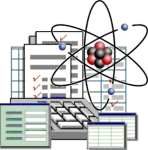2005-06-06 Presentation at the 10th International Conference "Mathematical Modelling and Analysis" MMA2005, June 1–5, 2005, Trakai, Lithuania 16 P. This contribution is devoted to investigation by methods of
mathematical modelling of multiwave Volume Free Electron Laser
(VFEL). Our previous investigations were devoted to numerical
modelling of VFEL with two-wave distributed feedback. Theoretical
investigations show the great advantage of different multiwave
diffraction geometries and in particular of three-wave diffraction
geometry. Generation in multiwave distributed feedback geometry
has many advantages including lasing in inaccessible for
traditional schemes range of parameters.
In three-wave VFEL we consider three strong electromagnetic waves that are under diffraction conditions. There are three possible geometries in such a system. First: so-called Bragg-Bragg case, when one wave goes forward and two waves go in the opposite direction. Second: Bragg-Laue case, when two waves go forward and one wave goes in the opposite direction. And in the last case, so-called Laue geometry, all three waves spread in one direction. Accordingly to this, we have to write out boundary conditions on different boundaries of the system and use right or left finite difference derivatives in accordance with wave spread directions. System of equations and boundary conditions for common case of n-wave coplanar distributed feedback geometry were formulated and are discussed too. |



